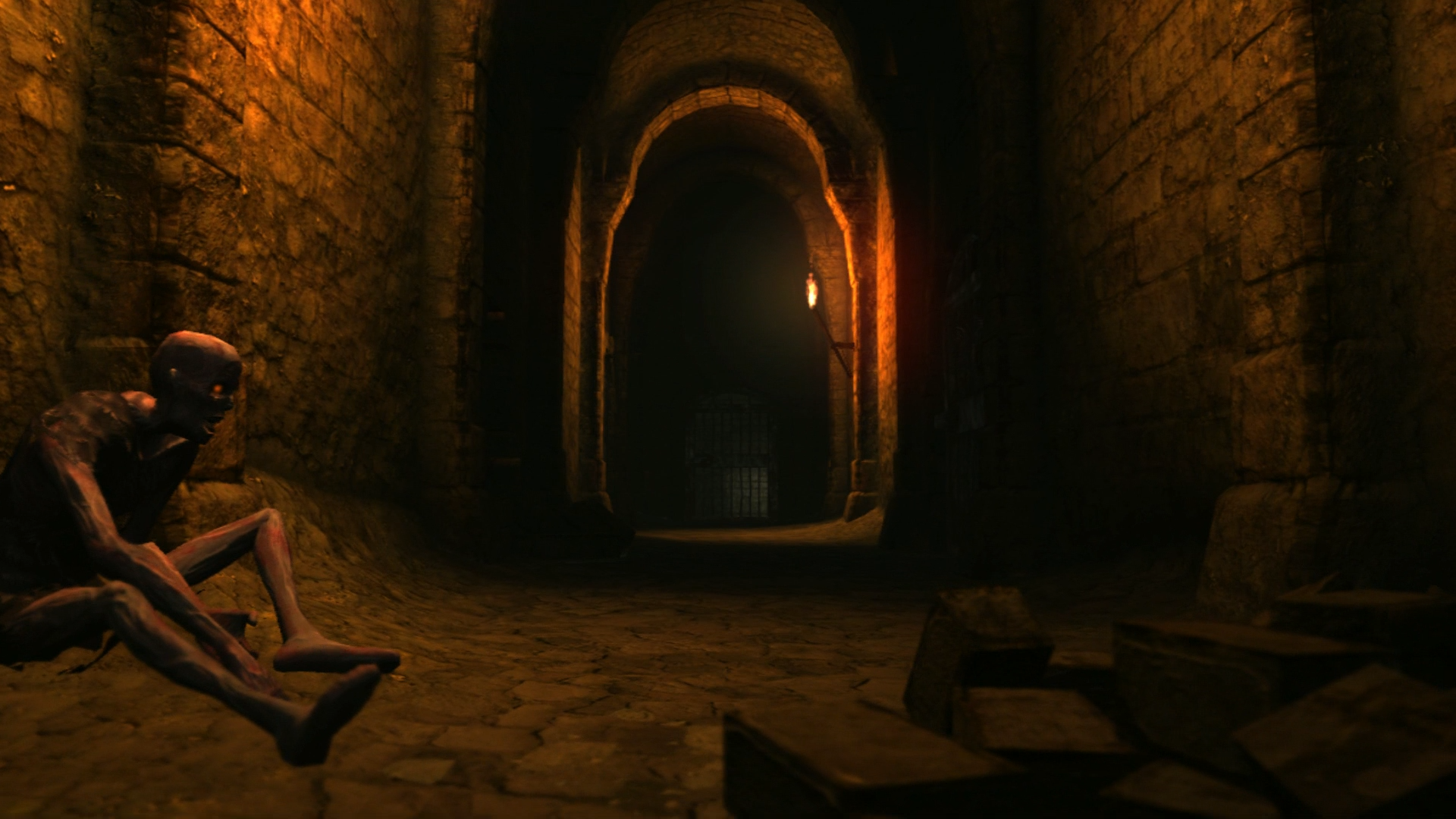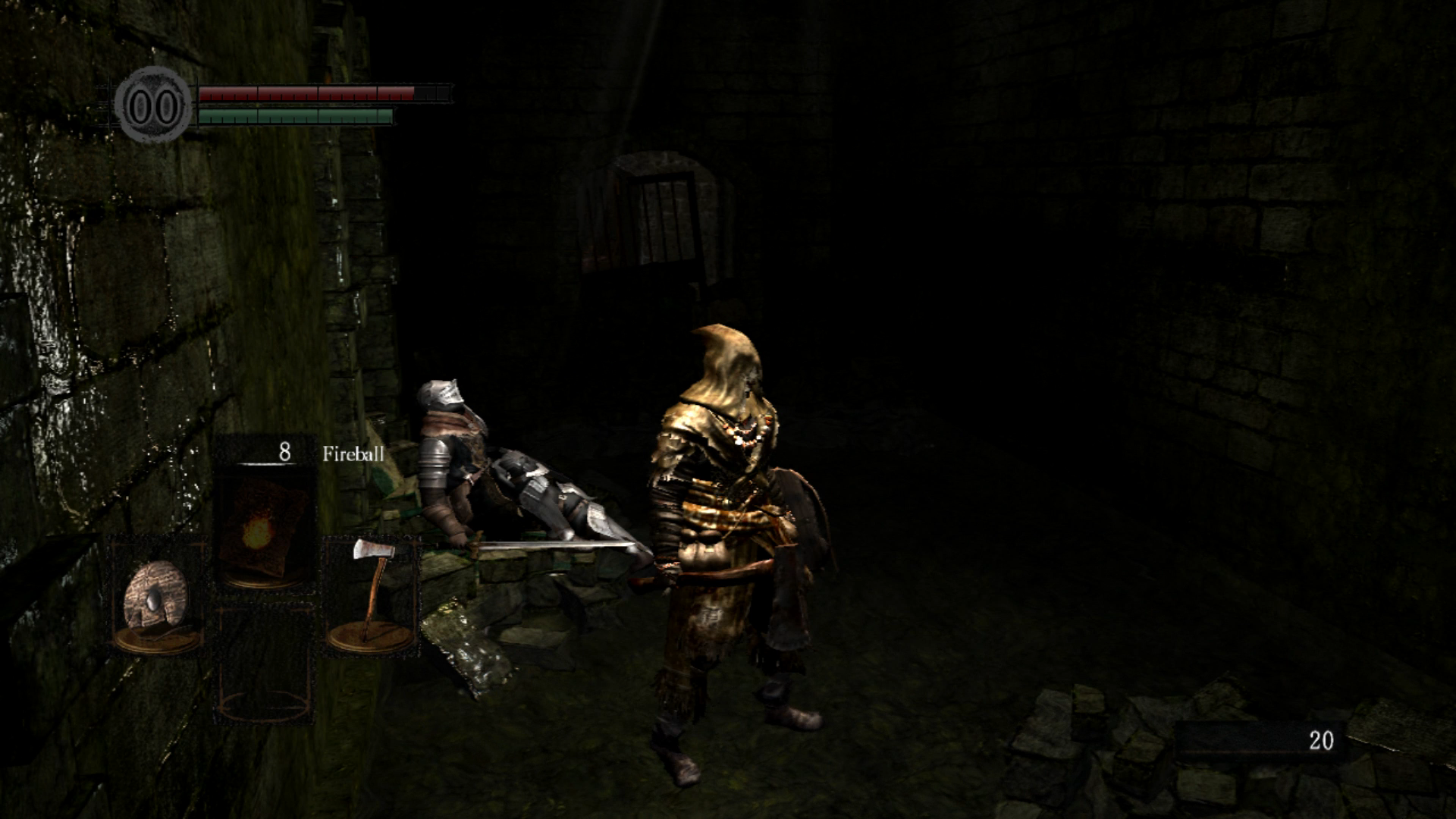Dark Souls doesn’t offer you complete freedom, taking the open-ended adventuring popularized by Metroid and Castlevania, letting you carve your own path through a densely woven web of levels. However, it lets you get properly, irretrievably lost, like an armour-clad pigeon caught in a thunderstorm. Take Blighttown. Or rather don’t: I’m sure merely reading those dreaded words will send shivers down the spine of anybody familiar with Dark Souls’ most notorious level. This derelict town is built into the walls of a gigantic, poisoned cavern, where you creep along treacherous walkways while being bombarded by blowdart snipers, scorched by fire-breathing dogs and attacked by bloated mosquitos - which projectile vomit poison, of course. Add on top of this the game’s horrible performance on the Xbox 360, sending the frame rate crashing down to a slideshow, and it was tough enough to get through Blighttown even with the healing items and protective equipment players could acquire beforehand. I didn’t have any of that my first time around. This area is intended to be tackled by most players after defeating the Gaping Dragon in the Depths, but can instead be accessed by taking a side passage shooting off from an enchanted forest, which sends you on a long trek past a black knight, lightning-breathing drakes and a huge, skeletal dragon. I trundled along this path as a green newbie, happily battling my way past gigantic ogres guarding the exit - or, as I thought, the entrance - to Blighttown. I got halfway through this monstrous obstacle course before my weapon broke. My only weapon. Without any repair powder or a plan B, I was stuck. I couldn’t simply fast-travel away, a luxury offered by each subsequent Soulsborne game: the original Dark Souls locks that privilege away until you reach the halfway mark of the game. So it was there, alone in Blighttown, that I abandoned my first playthrough a dozen hours in. Yet months later, just when I thought I was out, Miyazaki pulled me back in. The beauty of Lordran is subtle, and takes time to sink in. For example, that journey to Blighttown is actually amazing. You find the black knight at the centre of a spiralling path in the Darkroot Garden, a dance to the death scored by forest ambiance. Travelling through a mossy tunnel leads you to the mountain drakes, standing in formation outside the ruins of New Londo like gatekeepers of the damned. Then comes the skeletal dragon, a pitiful figure dangling from a cliff edge and vomiting poison: you can choose to sprint past or put the beast out of its misery. Finally, after running over a wooden bridge spanning a dizzying chasm, you find an ancient tower that leads directly back to Firelink Shrine, your base camp. All of this is presented continuously, without direct explanation from the game. Dark Souls is full of these masterful moments of environmental storytelling, made all the more impactful by the world’s inter-connectivity. Whether it’s finding an elevator in the Undead Parish that leads back home after the intense opening levels, breaking through two hidden walls and journeying to the bottom of an enormous dead tree, or defeating a hydra and climbing up a ladder hidden beside a waterfall, you feel like you’re discovering an ancient world preserved out of time. I don’t want to overly wax nostalgic: it’s undoubtedly a huge quality of life improvement to fast-travel between save points at will in future Soulsborne games, and the quality of the series’ worldbuilding, level design and storytelling has been consistently stellar. However, the lack of fast travel early on forces you to get intimately familiar with every path you choose in Dark Souls, for better or worse. Additionally, the amount of freedom offered by Dark Souls’ world make it incredibly replayable in a way none of its successors have replicated. I used to daydream on the bus home from secondary school about the different ways you could explore Lordran with a new character: would I sprint through the haunted catacombs, darting through labyrinthine corridors and dodging unkillable warriors to get the scythe? Maybe I’d go to the Darkroot Garden first and defeat the Moonlight Butterfly, using the divine ember acquired to cleave my way through the catacombs with ease. Or I could simply get the Zweihander in the graveyard beside Firelink Shrine, strip down to my loincloths and carve through hordes like a grimdark Conan. More than anything, this process of discovery and rediscovery forms a lasting relationship with Lordran as you learn about its nuances, lore and wonderfully strange characters in ever-blossoming detail. And thanks to the sparse poetry of its storytelling, there’s always room for your imagination to fill in the gaps, even after hundreds of hours. In my mind, Lordran forever exists as both a living, breathing world and an ethereal dreamscape. The next game from FromSoftware, Elden Ring, is due for release in January 2022. For info on other upcoming games, head over to our video game release dates page.

